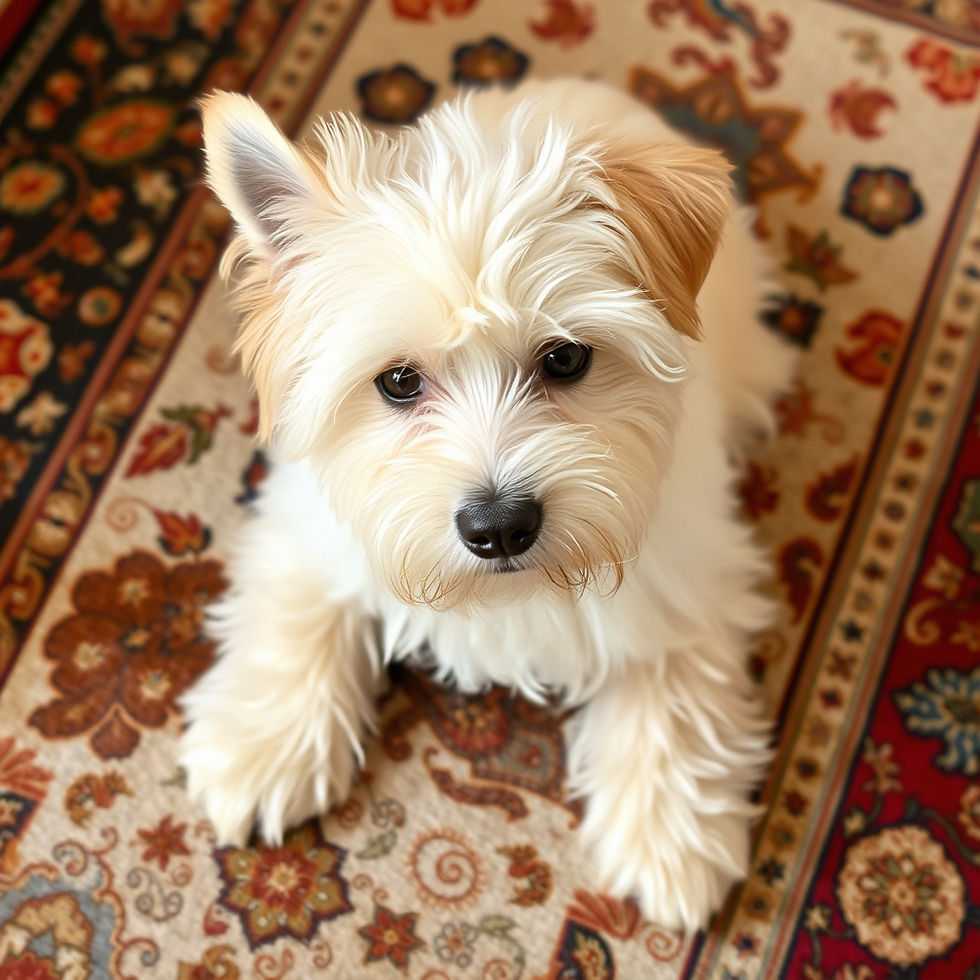How Thick Should Rug Pads Be?
- SoCal Rug Masters

- Aug 20
- 4 min read
Choosing the right rug pad thickness is not only about comfort—it directly impacts rug longevity, floor protection, and home safety. Whether you own modern rugs, oriental area rugs, or Moroccan rugs, understanding pad thickness will help you maximize performance and prevent unnecessary wear. At SoCal Rug Masters, we often hear homeowners ask: How thick should rug pad be for my space? This guide breaks down the answer based on rug type, flooring surface, cushioning needs, and safety considerations.
Introduction to Rug Pads
Rug pads provide much more than a soft step. They prevent tripping hazards by stabilizing the rug, create a moisture barrier to protect against spills and floor damage, provide floor protection from scratches, stains, or color transfer, add comfort through materials like memory foam pads or recycled felt, and keep rugs in place with non-slip backing or corner grips. Without a rug pad, homeowners risk rug slippage, uneven wear, and even costly floor repairs due to floor residue left by low-quality pads.
Factors Influencing Rug Pad Thickness
Type of Rug
High-pile and shag rugs need firmer pads like a felted pad or rubber backing combination for stability. Low-pile or oriental rugs benefit from thinner ¼” rug pad options to preserve alignment and prevent curling. Flatweaves or modern rugs require anti-slip grip for stability on hard surfaces.
Flooring Surface
Hardwood floors: Need natural rubber or felt pads for gentle grip and no staining. Concrete floors: Require extra cushioning for insulation and comfort. Tile and stone: Benefit from non-slip pads to reduce sliding. Wall-to-wall carpet: Use a carpet pad under area rugs to prevent bunching.
Desired Cushioning and Support
Some homeowners prioritize plush comfort with a memory foam pad, while others prefer slim, practical pads for door clearance. The right thickness depends on balancing cushioning with safety and rug placement.
Recommended Thickness for Different Rug Types
High-Pile and Shag Rugs
These rugs trap dirt and compress under heavy traffic. A pad between ½″ and ⅜″ offers strong support while maintaining softness. Choose a felted pad or felt-and-rubber combination for grip plus cushioning.
Low-Pile and Flatweave Rugs
Thin rugs slide easily on hard floors. Pads of ¼″ or less with non-slip backing are ideal to prevent rippling. Rug pad grippers or rug tape may be added for extra stability.
Oriental Rug Pads
Oriental rugs and oriental area rugs need careful handling. A pad that is ¼″ thick with natural rubber ensures support without elevating the rug too high. This preserves weaving integrity and prevents vacuum suction from stressing delicate natural fibers.
Rug Pad Thickness for Different Flooring Types
Hardwood Floors
Use a natural rubber pad or eco-friendly rug pad (like recycled felt) around ¼″–½″ thick. Avoid polyvinyl chloride (PVC) pads, which can leave floor residue and damage finish.
Carpeted Floors
On wall-to-wall carpet, area rugs tend to shift. A thin carpet pad or rug tape holds rugs in place without bulk. Thickness of ¼″ is usually sufficient to reduce buckling.
Tile and Stone Floors
On textured or uneven tile, a thicker pad (⅜″–½″) provides comfort and stabilizes the rug. A memory foam or felt-rubber hybrid adds both cushioning and grip.
Benefits of Thicker Rug Pads
Enhanced Comfort and Insulation
A thicker memory foam pad makes standing more comfortable, especially in kitchens and living rooms. Pads also insulate against cold concrete floors and provide a moisture barrier.
Improved Soundproofing
Thicker pads enhance sound absorption, reducing noise transfer in multi-level homes or apartments. This is especially helpful under modern rugs in high-traffic areas.
Considerations for Thinner Rug Pads
Clearance and Door Swing
Too much thickness causes door clearance issues. Doors may drag across rugs if pads exceed ½″. Thin pads avoid this problem while still offering floor protection.
Reduced Space Impact
In smaller rooms, slim pads prevent rugs from appearing elevated or bulky. A pad around ¼″ keeps a low profile, reducing tripping risks.
Balancing Comfort and Practicality
The right thickness is about balance. A thick pad provides comfort and heat resistance from heat beneath the carpet, while a thinner pad avoids bulk and maintains door clearance. The best solution often lies in combination pads that merge cushioning with stability.
Protecting Flooring and Rugs with Rug Pads
Pads extend rug and floor life by reducing friction. High-quality pads made of natural rubber or eco-friendly recycled felt prevent scratching on hardwood floors and stop dyes from transferring. For antique or oriental rugs, this protection is invaluable.
Enhancing Rug and Floor Longevity
A proper pad reduces fiber crush, keeps rugs aligned, and protects against long-term wear. For homes with heavy traffic areas, pads are critical in ensuring oriental area rugs and Moroccan rugs maintain their beauty.
Choosing the right pad material and thickness is not one-size-fits-all. At SoCal Rug Masters, we provide custom rug pads cut to size with options in natural rubber, recycled felt, and eco-friendly rug pad materials. Our team also offers rug cleaning services to pair padding with ongoing care. Whether you need rug pad grippers, anti-slip solutions, or a full Protection Plan for your investment rugs, we deliver tailored recommendations to maximize rug and floor longevity. Contact SoCal Rug Masters today to schedule a consultation and get the best pad fit for your home.








Comments